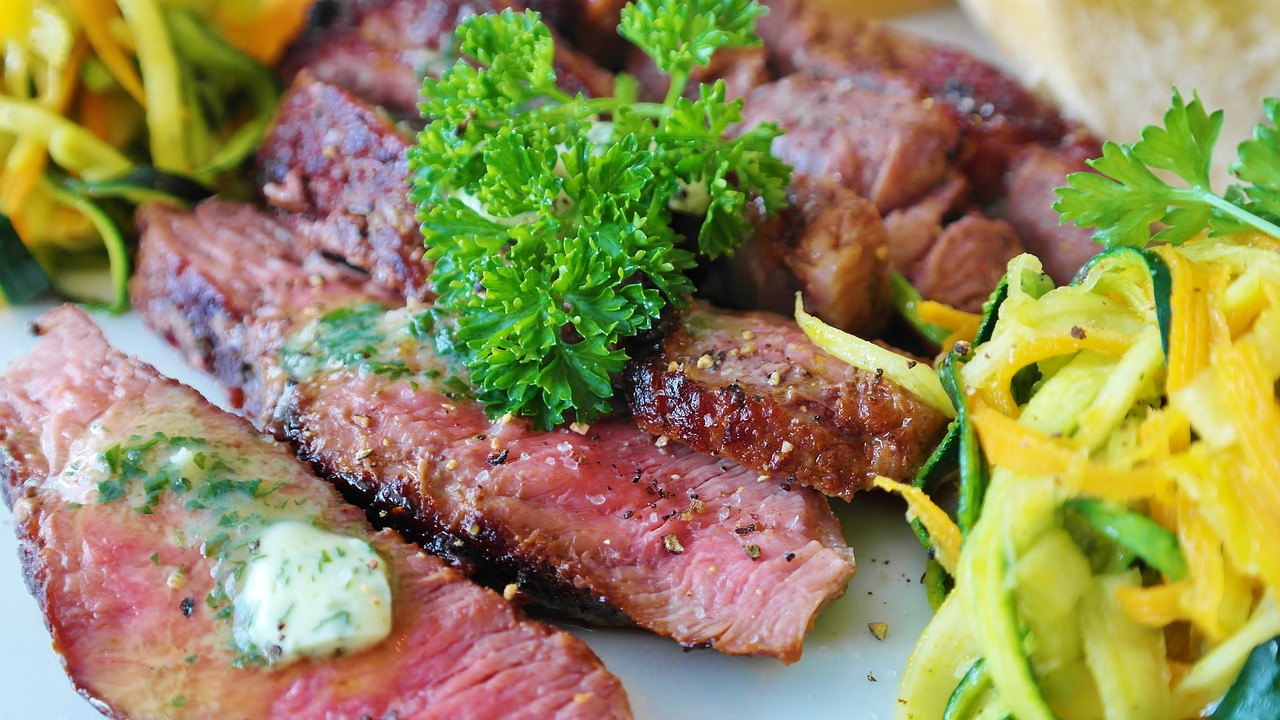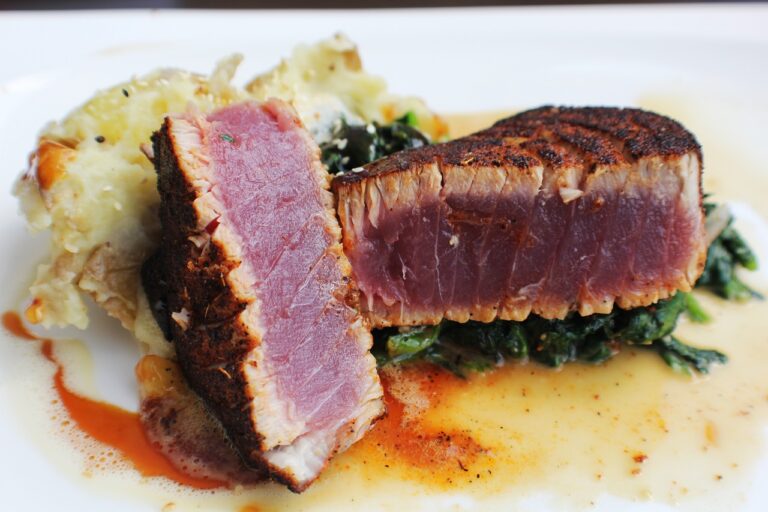Discover 10 Interesting Reasons Why You Are Craving Meat

Meat, a source of essential nutrients and a staple in many diets worldwide, is often subject to intense cravings. While vegetarians and vegans might abstain from meat consumption for ethical, environmental, or health reasons, those who do consume meat sometimes experience powerful urges to have it. Understanding the reasons behind these cravings can offer valuable insights into our dietary habits and physiological needs.
Why Am I Craving Meat?
1. Nutritional Needs
Meat is rich in various nutrients, including protein, iron, and certain vitamins. When the body lacks these essential nutrients, it might manifest as a craving for meat, which is a direct source of them.
Many vegetarians and vegans find alternative sources for these nutrients, but those who are unaware of their dietary deficiencies might feel a strong urge to consume meat to compensate for the lack.
2. Evolutionary Basis
Throughout human evolution, meat has played a crucial role as a primary source of energy and nutrients. Historically, humans who were successful hunters had better chances of survival.
This evolutionary connection to meat consumption might have hardwired some of the cravings into our genetic makeup. Modern humans might still experience these urges based on our ancestors’ reliance on meat.
3. Psychological Association
Meat consumption can be tied to particular memories or traditions. Holidays, family gatherings, and cultural events often center around specific meat dishes.
When individuals associate these positive memories with meat, they might experience cravings, especially during similar situations or when reminded of those memories.
4. Social Influence
In many cultures, meat is seen as a status symbol or a sign of affluence. Consuming meat, especially rare or expensive cuts, can be associated with social standing or special occasions.
Peer pressure or the desire to fit into a social group can influence meat cravings. For some, eating meat becomes a social activity, and they might crave it more in social situations.
5. Sensory Appeal
The taste, smell, and texture of meat can be alluring to many. Fatty meats release aromatic compounds when cooked, which can be hard for some to resist.
The unique umami flavor of meat, which isn’t easily replicated in plant-based foods, can also be a significant factor behind these cravings.
6. Blood Sugar Regulation
Meat, being high in protein, can help stabilize blood sugar levels. When blood sugar drops, the body seeks foods that can provide quick energy and stability.
For those who are accustomed to consuming meat, it can be seen as a go-to food to balance out energy levels, leading to increased cravings during energy dips.
7. Hormonal Changes
Hormonal fluctuations, especially in women during certain phases of their menstrual cycle, can lead to increased cravings for specific foods, including meat.
Iron is especially needed during menstruation, and given meat’s iron-rich profile, it’s not uncommon for some women to crave meat during this time.
8. Gut Bacteria
The gut microbiome plays a role in our food preferences. Different bacteria thrive on different nutrients, and if the bacteria that feed on meat-derived nutrients dominate the gut, they might send signals to the brain, encouraging more meat consumption.
A diet rich in meat will support the growth of these bacteria, potentially leading to more pronounced meat cravings.
9. Restrictive Diets
Individuals who suddenly reduce or eliminate meat from their diets might experience heightened cravings. This is due to both physiological and psychological reasons.
When the body is used to certain nutrients from meat and suddenly lacks them, it can trigger cravings. Additionally, the mere act of restriction can make the restricted item seem more appealing.
10. Mood and Comfort
For many, meat-based dishes are comfort foods. Foods like steaks, burgers, and meat stews might be associated with feelings of warmth, satisfaction, and happiness.
During times of stress, sadness, or even just a bad day, people might crave comfort foods, including their favorite meat dishes, to elevate their mood.
Craving Burnt Meat
Craving burnt meat can be an intriguing preference, often linked to the unique flavor that comes from the Maillard reaction, where sugars and amino acids react under high heat to create a complex taste profile. Some individuals find the slightly charred texture and smoky aroma irresistible, associating it with outdoor grilling and festive gatherings. This craving might also stem from a desire for certain minerals or compounds that are more prominent in charred meat.
However, it’s important to moderate consumption, as burnt meat contains polycyclic aromatic hydrocarbons and heterocyclic amines, which are potential carcinogens. Finding a balance between enjoying the distinct taste of burnt meat and minimizing health risks can involve grilling techniques that reduce charring, such as marinating meat or cooking at lower temperatures. Experimenting with spices and sauces can also mimic the depth of flavor without excessive charring, satisfying cravings in a healthier way.
Craving Canned Meat
Craving canned meat can be attributed to its convenience, long shelf life, and rich, salty flavor that satisfies the palate instantly. It’s a quick source of protein and fat, making it a go-to option for people with busy lifestyles or in need of a satisfying meal without the preparation time. The unique taste and texture of canned meat, often enhanced with preservatives and seasonings, can trigger cravings, especially for those who grew up consuming it regularly.
Canned meat can be a practical choice in emergency food supplies or for outdoor activities like camping. However, it’s wise to consider the nutritional content, as canned meats can be high in sodium and saturated fats. To indulge in canned meat cravings healthily, look for low-sodium versions or pair with plenty of vegetables and whole grains to balance the meal. Moderation is key to enjoying the convenience and taste of canned meat while maintaining a nutritious diet.
Craving Cold Meat
Craving cold meat might stem from a preference for the refreshing, firm texture and subtle flavors that develop when meat is chilled. Cold cuts, for instance, offer a convenient and versatile option for sandwiches, salads, or as part of a charcuterie board. The convenience of not having to cook makes cold meats appealing, especially on hot days or for quick, protein-rich snacks.
This craving could also be related to the body’s need for proteins and fats, which cold meats can supply efficiently. Incorporating cold meats into a balanced diet requires attention to variety and moderation, given the potential high sodium and preservative content in some products. Opting for lean cuts and limiting processed varieties can satisfy cravings while supporting overall health. Pairing cold meats with fresh vegetables and whole grains can create satisfying meals that fulfill nutritional needs.
Craving Cured Meat
Cured meats, with their intense flavors and satisfying textures, are often craved for their unique taste that comes from the curing process involving salt, nitrates, spices, and sometimes smoke. This process not only preserves the meat but also enhances its flavor, making cured meats like salami, prosciutto, and jerky highly desirable. The craving for cured meat can also be linked to a desire for savory and umami flavors, which these meats possess in abundance.
While enjoying cured meats can be a delightful culinary experience, it’s important to consume them in moderation due to their high sodium and saturated fat content. They can be incorporated into meals in small amounts to add flavor, such as adding slices of prosciutto to a fresh salad or using them as a flavorful ingredient in pasta dishes. To balance out the diet, pairing cured meats with high-fiber foods like vegetables and whole grains can help mitigate the effects of their high sodium content.
Craving Fatty Meat
The craving for fatty meat often reflects a biological need for high-energy foods, providing both a rich source of calories and essential fatty acids necessary for optimal health. The succulence and flavor of fatty meats are unparalleled, offering a sensory experience that leaner cuts simply cannot match. This craving might also signal a need for fat-soluble vitamins, such as vitamins A, D, E, and K, which are more abundant in fatty meats.
To indulge in fatty meats while maintaining a healthy lifestyle, choosing grass-fed and organically raised options can be beneficial, as they often have a better fatty acid profile, including higher levels of omega-3 fatty acids. Cooking methods that render some of the fat, such as grilling or roasting, can reduce the overall fat intake while still satisfying the craving. Balancing meals with fatty meats by including plenty of vegetables and whole grains can ensure a well-rounded diet.
Craving Hamburger Meat
The craving for hamburger meat can be driven by its versatility, rich flavor, and the comforting association with familiar and beloved dishes like burgers and meatloaf. Ground beef, the primary ingredient in hamburger meat, is rich in protein and iron, contributing to its satisfying nature. The craving might also be a response to the body’s need for these nutrients, especially iron, which is crucial for energy levels and overall health.
To enjoy hamburger meat in a healthier way, opting for lean or extra-lean ground beef can reduce the intake of saturated fats. Experimenting with recipes that incorporate whole grains and vegetables, such as adding grated zucchini or carrots to the meat mixture, can enhance the nutritional profile of dishes while still satisfying the craving. Enjoying hamburger meat in moderation, as part of a balanced diet, allows for the fulfillment of cravings without compromising health goals.
Craving Luncheon Meat
Cravings for luncheon meat can be attributed to its convenience, salty taste, and the nostalgia of simple, satisfying sandwiches from one’s childhood. Luncheon meats are readily accessible, making them a popular choice for quick meals and snacks. The high sodium and flavor enhancers present in these meats stimulate the taste buds, creating a craving for more.
However, it’s important to be mindful of the nutritional aspects of luncheon meats, as they can be high in preservatives and saturated fats. For a healthier approach, seek out lower sodium and reduced-fat options, which are increasingly available. Incorporating luncheon meat into a balanced diet, paired with whole grain breads and plenty of vegetables, can satisfy cravings while maintaining nutritional health. Moderation is key, as well as exploring diverse protein sources to ensure a varied and balanced diet.
Craving Meat After Workout
Craving meat after a workout is a natural response to the body’s need to repair and build muscle tissue, with meat providing a rich source of high-quality protein and essential amino acids. The physical exertion depletes energy stores, making the body signal for nutrient-dense foods to replenish energy and support recovery. Iron and zinc found in meat are also crucial for muscle repair and overall health, contributing to post-workout cravings.
To satisfy these cravings healthily, opting for lean meats like chicken breast, turkey, or lean beef can provide the necessary nutrients without excessive fat. Incorporating meat into a balanced meal with carbohydrates from whole grains and antioxidants from vegetables can optimize recovery and muscle growth. It’s also beneficial to hydrate well and consider timing meals to align with recovery needs, ensuring the body receives nutrients when it most needs them.
Craving Meat And Cheese
The combination of meat and cheese is highly appealing, offering a rich mix of flavors, textures, and nutrients, including protein, fat, and calcium. This craving can be linked to the desire for savory and umami flavors, with both meat and cheese providing a satisfying depth of taste. The high fat content in cheese complements the texture and flavor of meat, creating a comforting and indulgent culinary experience.
To indulge in this craving in a healthier manner, choosing lean cuts of meat and opting for cheese that is lower in fat and sodium can make a significant difference. Including this combination in balanced meals, such as adding grilled chicken and a slice of cheese to a salad loaded with vegetables, can provide the satisfaction of the craving while maintaining nutritional balance. Moderation is key, as is pairing these richer foods with plenty of fiber-rich vegetables and whole grains to ensure a well-rounded diet.
Craving Meat And Chocolate
Craving meat and chocolate together might seem unusual, but it points to a need for a broad spectrum of nutrients, including magnesium, iron, and protein. Chocolate, especially dark chocolate, is rich in magnesium and antioxidants, while meat provides high-quality protein and iron, catering to the body’s diverse nutritional needs. This combination can also satisfy both savory and sweet cravings, offering a complex flavor experience.
To satisfy these cravings healthily, choosing lean meats and dark chocolate with a high cocoa content can maximize nutritional benefits while minimizing unhealthy fats and sugars. Incorporating these foods into a balanced diet, allowing for small indulgences of dark chocolate as a treat, and pairing meat with vegetables and whole grains can fulfill cravings in a nutritious manner. Listening to the body’s signals and providing it with a variety of nutrients can help satisfy these diverse cravings healthily.
Craving Meat And Eggs
Craving meat and eggs is a sign of the body’s desire for high-quality proteins, essential fats, and a variety of vitamins and minerals. Both foods are excellent sources of complete proteins, containing all nine essential amino acids necessary for bodily functions and muscle repair. This craving might also indicate a need for more substantial, energy-dense meals to support an active lifestyle or recovery from physical exertion.
To fulfill this craving in a nutritious way, consider preparing meals that combine lean meats with eggs, such as an omelet with chicken or turkey. Including vegetables in these dishes can add fiber, vitamins, and minerals, creating a balanced and satisfying meal. Choosing cooking methods like grilling, baking, or poaching can keep the meal lower in unhealthy fats, making it possible to enjoy the richness of meat and eggs in a way that supports overall health and wellness.
Craving Meat And Salt
The craving for meat and salt together often reflects a desire for savory, umami-rich foods that satisfy the palate deeply. Salt not only enhances the flavor of meat but also
plays a role in hydration and electrolyte balance, which can be particularly appealing after physical activity or in hot weather. This craving might also signal a need for the minerals found in both meat and salt, such as sodium, potassium, and zinc.
To indulge in these cravings in a healthier manner, selecting lean cuts of meat and using salt sparingly or opting for natural salt sources like sea salt can provide the desired flavors without excessive sodium intake. Pairing salty meats with potassium-rich foods, such as fruits and vegetables, can help balance electrolytes naturally. Moderation and mindful eating, along with a focus on whole, minimally processed foods, can satisfy these cravings while supporting overall health.
Craving Meat At Night
Craving meat at night may be linked to the body’s need for tryptophan, an amino acid found in meat that helps produce serotonin and melatonin, aiding in sleep. This craving can also be a response to insufficient protein intake during the day, leading to hunger signals that target high-protein foods like meat. The comfort and satisfaction derived from eating meat can also play a role, especially after a long day.
To address nighttime meat cravings in a healthy way, planning a balanced dinner that includes a moderate portion of lean meat, complex carbohydrates, and vegetables can provide the necessary nutrients and help promote restful sleep. Choosing lighter meats such as turkey or chicken can be especially beneficial due to their tryptophan content. Ensuring adequate protein intake throughout the day can also help minimize nighttime cravings, supporting a healthy sleep cycle.
Craving Meat During Pregnancy
Craving meat during pregnancy is common and can be attributed to the body’s increased need for protein, iron, and other nutrients essential for the development of the fetus. Meat is a rich source of these nutrients, making cravings a natural response to the body’s efforts to support both the mother’s and baby’s health. These cravings might also indicate a deficiency or the body’s instinctual push toward nutrient-dense foods.
To satisfy meat cravings during pregnancy healthily, opting for lean meats and incorporating a variety of protein sources, such as fish (with low mercury levels), poultry, and legumes, can ensure a balanced intake of nutrients. It’s also important to cook meat thoroughly to avoid any risk of foodborne illnesses, which can be more concerning during pregnancy. Consulting with a healthcare provider about dietary choices and any specific cravings can provide additional guidance and reassurance.
Craving Meat In The Morning
Craving meat in the morning can signal the body’s need for a high-protein start to the day, providing sustained energy and satiety. This craving might also stem from lower protein intake the previous day, leading the body to seek out rich protein sources early on. Meat’s ability to stabilize blood sugar levels from the start can make it an appealing breakfast choice, especially for those with active lifestyles or specific nutritional goals.
Incorporating lean meats into breakfast, such as turkey bacon, chicken sausages, or a slice of lean ham, can satisfy cravings without overloading on fats. Pairing these meats with whole grains, fruits, and vegetables can create a balanced meal that fuels the body effectively through the morning. Experimenting with meat-based breakfast recipes that include a variety of nutrients can make mornings more enjoyable and nutritionally rich.
Craving Meat Sauce
Craving meat sauce often relates to the comforting, rich flavors that come from a blend of meat, tomatoes, and herbs simmered together. This craving can be a call for hearty, warming meals that satisfy both hunger and a desire for complex flavors. Meat sauce is versatile, serving as a staple in many cuisines and dishes, from pasta to rice bowls, making it a frequent craving for those who enjoy robust, savory meals.
To enjoy meat sauce in a healthier way, consider using lean ground meat and incorporating a variety of vegetables into the sauce, such as mushrooms, bell peppers, and onions, to boost its nutritional profile. Opting for whole grain pasta or alternatives like zucchini noodles can complement the richness of the sauce while keeping the meal balanced. Moderation in portion sizes and mindful eating can allow for the enjoyment of meat sauce as part of a nutritious diet.
Craving Meat Spiritual Meaning
Cravings for meat can sometimes be interpreted as having a spiritual meaning, reflecting a need for grounding or seeking comfort and nourishment at a deeper level. In some traditions, meat is seen as energetically dense, capable of providing strength and stability. This craving might also symbolize a desire for more energy or vitality, suggesting a need to replenish the body’s reserves.
Addressing a craving for meat from a spiritual perspective can involve mindful eating practices, where one pays attention to the body’s signals and the food’s origin, expressing gratitude for the nourishment it provides. Incorporating meat into a balanced diet, while also exploring other sources of energy and comfort, such as meditation or spending time in nature, can fulfill both physical and spiritual needs. Understanding personal cravings and their underlying messages can lead to a more harmonious and healthful relationship with food.
Craving Meat When Sick
Craving meat when sick can be the body’s way of signaling for nutrients that support healing and recovery, such as protein, zinc, and iron, which are essential for immune function and energy. This craving might also be related to the body’s need for more substantial foods to regain strength. The comfort and familiarity of meat can also be appealing when feeling unwell, providing a sense of well-being and satisfaction.
To satisfy meat cravings when sick in a nutritious way, choosing easily digestible, lean meats and preparing them in simple, comforting forms, such as chicken soup or broth, can be beneficial. It’s important to listen to the body’s cues and eat according to appetite and tolerance, focusing on gentle nutrition that supports recovery. Pairing meat with vegetables and whole grains, if tolerated, can further enhance the healing process and provide a balanced intake of nutrients.
Craving Processed Meat
Cravings for processed meat can stem from their distinctive flavors, convenience, and the satisfying sensation of consuming high-fat, salty foods. These meats, including sausages, bacon, and deli slices, undergo processing that enhances their taste and preservation, making them highly palatable. The craving might also be influenced by habits or memories associated with these foods, such as enjoying them in social settings or as comfort foods.
While processed meats can be enjoyable, it’s important to consider their health impacts, as they are often high in sodium and preservatives. To indulge in these cravings more healthily, look for products with reduced sodium and without added nitrates. Incorporating processed meats as part of a balanced meal, featuring plenty of vegetables and whole grains, can mitigate some of their less desirable nutritional aspects. Moderation and variety in protein sources are key to enjoying processed meats within a healthy dietary pattern.
Craving Red Meat
Craving red meat is often a sign of the body’s need for essential nutrients that red meat is particularly rich in, such as iron, zinc, and B vitamins. These cravings can be especially pronounced in individuals with deficiencies or increased nutritional needs, such as athletes or pregnant women. The satisfying taste and texture of red meat also contribute to its appeal, fulfilling both nutritional and sensory desires.
To satisfy cravings for red meat in a healthy manner, choosing lean cuts and practicing portion control can help maintain a balanced diet. Alternating red meat with other protein sources, such as poultry, fish, and plant-based proteins, can provide nutritional variety and reduce the risk of consuming too much saturated fat. Preparing red meat with healthy cooking methods, such as grilling or broiling, and pairing it with vegetables and whole grains can create nutritious and satisfying meals.
Craving Salty Meat
Cravings for salty meat often highlight a desire for foods that are rich in flavor and satisfying in texture. Salt not only enhances the taste of meat but also stimulates the appetite, making salty meats particularly appealing. This craving could also indicate a need for electrolytes, which are important for maintaining the body’s fluid balance, especially after exercise or in hot weather.
To manage cravings for salty meat healthily, opting for natural sources of saltiness, such as cured meats with lower sodium content, can be a wise choice. Balancing these cravings with a diet rich in fruits, vegetables, and whole grains can help offset the potential negative effects of high sodium intake. It’s also beneficial to explore seasoning alternatives that can provide a similar flavor profile without excessive salt, such as herbs, spices, and citrus zest.
Craving Smoked Meat
The craving for smoked meat can be attributed to its distinct flavor profile, created by the smoking process, which imparts a deep, rich taste and aroma. Smoked meats, such as brisket, ribs, and sausages, offer a unique culinary experience, combining the natural flavors of the meat with the complexity of smoke. This craving might also be linked to the psychological aspects of comfort and satisfaction derived from consuming foods with a pronounced flavor.
To enjoy smoked meats in a healthier way, choosing leaner cuts and controlling portion sizes can make a significant difference. Incorporating smoked meats into meals that also feature a variety of vegetables and whole grains can balance out the meal, providing a broader spectrum of nutrients. Enjoying smoked meats as an occasional treat, rather than a regular part of the diet, can help maintain a healthy balance while still satisfying cravings.
Suddenly Craving Meat
Suddenly craving meat can indicate the body’s immediate need for nutrients found in meat, such as protein, iron, and B vitamins. These cravings can arise from dietary deficiencies, changes in physical activity levels, or even psychological factors such as stress or comfort-seeking. The craving for meat can also be a signal from the body seeking the satisfaction and fullness that meat provides, especially if one’s diet has been lacking in dense protein sources.
To address sudden meat cravings in a healthy way, it’s important to evaluate the overall diet and ensure it’s balanced and meets nutritional needs. Incorporating a variety of protein sources, including lean meats, fish, poultry, and plant-based proteins, can provide the necessary nutrients while maintaining dietary diversity. Listening to the body’s cues and consuming meat in moderation, as part of a well-rounded diet, can fulfill these cravings without compromising health.
Vegetarian Craving For Meat
Vegetarians craving meat may experience this due to nutritional deficiencies, such as in iron, zinc, or B12, which are commonly found in meat. This craving might also stem from psychological factors, such as the memory of meat’s taste and texture, or social situations where meat is prevalent. For vegetarians, satisfying these cravings without consuming meat can involve seeking out plant-based alternatives that mimic the flavor and texture of meat, such as legumes, tofu, tempeh, and seitan.
Ensuring a well-balanced vegetarian diet rich in the nutrients typically found in meat can help mitigate cravings. Supplements or fortified foods can address specific nutritional needs, such as B12. Exploring a variety of recipes and cooking techniques with plant-based ingredients can also provide the satisfaction and diversity in flavors and textures that one might miss from meat. Engaging with a community of vegetarians or seeking guidance from nutrition professionals can offer support and creative solutions to satisfy cravings in alignment with vegetarian principles.
Why Am I Craving Lamb Meat
Craving lamb meat specifically might be due to its unique flavor profile, which is distinct from other meats and can evoke a strong sensory response. Lamb is also a rich source of nutrients such as iron, zinc, and B vitamins, which your body may be signaling a need for, especially if there’s a dietary deficiency. The craving for lamb could also be associated with cultural or familial preferences, where lamb is a traditional component of meals and thus elicits comfort or nostalgia.
To healthily satisfy a craving for lamb meat, choosing lean cuts and preparing them with healthy cooking methods, such as grilling or roasting, can reduce the intake of saturated fats. Pairing lamb with a variety of vegetables and whole grains can also enhance the nutritional value of the meal. If the craving is due to nutrient deficiencies, diversifying the diet with other rich sources of the needed nutrients or consulting a healthcare provider for advice can be beneficial.
How To Stop Craving Meat
Stopping meat cravings can involve addressing the underlying causes, such as nutritional deficiencies or habits. Ensuring a balanced intake of nutrients from a variety of sources can help mitigate cravings. Incorporating plant-based protein sources, like legumes, nuts, tofu, and whole grains, can provide the body with essential nutrients found in meat.
Hydrating adequately and managing stress through healthy outlets can also reduce cravings that are not based on actual nutritional needs. Experimenting with meat alternatives and flavorful plant-based recipes can satisfy the palate and decrease the desire for meat. If cravings persist, consulting with a healthcare professional or a nutritionist can provide personalized advice and strategies to adjust dietary habits in a healthy and sustainable manner.
No Longer Craving Meat
No longer craving meat can indicate a shift in dietary preferences or the body’s adaptation to a diet that fulfills its nutritional needs through other sources. This change can be the result of consciously choosing to eat more plant-based foods, which can provide all necessary nutrients when well-planned. The absence of meat cravings might also reflect a satisfaction with the variety and quality of foods being consumed, indicating a balanced diet that supports overall health and well-being.
Maintaining a diet that no longer includes meat cravings involves ensuring a diverse intake of proteins, vitamins, and minerals from plant sources, whole grains, nuts, seeds, and legumes. Regularly experimenting with new recipes and foods can keep the diet interesting and nutritionally complete. Monitoring health markers and consulting with nutrition professionals can ensure that the diet continues to meet all nutritional requirements, supporting long-term health and dietary satisfaction.
Conclusion
Craving meat is a multifaceted experience influenced by physiological, psychological, and societal factors. While the reasons listed above offer a comprehensive overview, individual experiences can vary widely. Recognizing and understanding the origins of these cravings can help individuals make informed dietary choices and navigate their personal relationship with meat.






